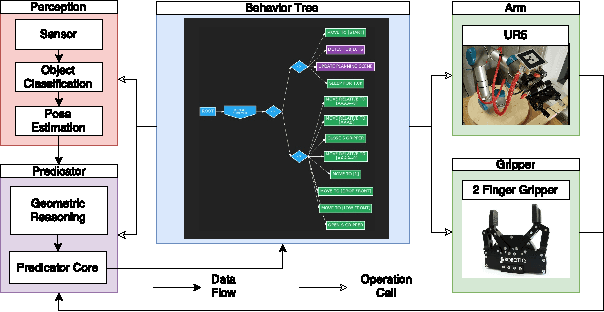User Experience of the CoSTAR System for Instruction of Collaborative Robots
Paper and Code
Mar 23, 2017



How can we enable novice users to create effective task plans for collaborative robots? Must there be a tradeoff between generalizability and ease of use? To answer these questions, we conducted a user study with the CoSTAR system, which integrates perception and reasoning into a Behavior Tree-based task plan editor. In our study, we ask novice users to perform simple pick-and-place assembly tasks under varying perception and planning capabilities. Our study shows that users found Behavior Trees to be an effective way of specifying task plans. Furthermore, users were also able to more quickly, effectively, and generally author task plans with the addition of CoSTAR's planning, perception, and reasoning capabilities. Despite these improvements, concepts associated with these capabilities were rated by users as less usable, and our results suggest a direction for further refinement.
 Add to Chrome
Add to Chrome Add to Firefox
Add to Firefox Add to Edge
Add to Edge